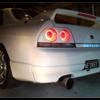Got A 3076r - Just A Conclusion
Announcements
-
Similar Content
-
Latest Posts
-
By Dose Pipe Sutututu · Posted
We are literally just kids stuck in an adult's body with bills and mortgages to pay 🥲 -
By SeanR32GtSt · Posted
Behrman is great quality stuff. My 34 has some serious clouding as well but I’m too nervous to try and replace the glass myself so I haven’t bought them yet. -
By Murray_Calavera · Posted
This might be true if you live in NZ but I can't see how this could be true for us locals here. I've found the customer support for Haltech to be absolutely amazing. I've turned up to Haltech and spent entire days with their tech support guys, they've even helped me with wiring dramas that had nothing to do with their products. They have the best customer support of any company I've dealt with, I can't imagine how my experiences with them could possibly be any better. -
If you want to do a single throttle body conversion easily, you won't need to pull anything apart. Take the linkage from your throttle off the linkage controlling the ITBs. Now open the ITBs wide open, and lock the linkages in said position. Now add a single throttle body onto the front of your inlet plenum. No it's not ideal for the last nth of a kw, but it'll be a lot better than what you're already trying to do... PS, ITBs can be so damn hard to tune from, because roughly 20% movement in a throttle body equates to a change in roughly 80% of its flow (Hence power). When you add up the flow limitations of those small throttle bodys, it is a LOT higher than that of a single large throttle. Hence, TPS is very very sensitive with them, and you do a LOT of work with sensor fusion, and some Maths behind the scenes to make those blends nice, and be smooth.
-
Yep, when Haltech purchased Adaptronic, and all of the Adaptronic staff, including Andy went with it, it took Haltech to the next level. Haltech wanted Adaptronic as they wanted things like Andy's fuel models, and some other IP, AND they wanted Andy too as he is brilliant! Andy has spoken about the incompatibilities between the old 1500 stuff vs Nexxus, and it totally makes sense. It's not JUST software that is different, there is huge changes in the underlying hardware too. It's why Haltech has had soooo many changes in the last couple of years, in terms of Hardware, and Software, and why it has become so damn Amazing. Why do you think guys like Rob Dahm with his quad rotor, went from running Adaptronic's to running Haltechs? Andy. Pretty much, Haltech these days, is Adaptronic, but with more funds behind it, and more staff, and hence Andy's visions, and visions of other people that he helps shape their great visions, into amazing new products. All the new Nexxus gear, whole new software for it, new and better dashboards, the apps that will run on headunits and NOT be slow to respond! I understand people being burnt in the past, but if you're ragging on a company, about products and issues from many years ago, it's more a reflection on yourself, not looking or keeping up with new stuff. In which case, those people should be going back to PowerFC and Nistunes as the ECU's to rave on about...
-







Recommended Posts
Create an account or sign in to comment
You need to be a member in order to leave a comment
Create an account
Sign up for a new account in our community. It's easy!
Register a new accountSign in
Already have an account? Sign in here.
Sign In Now